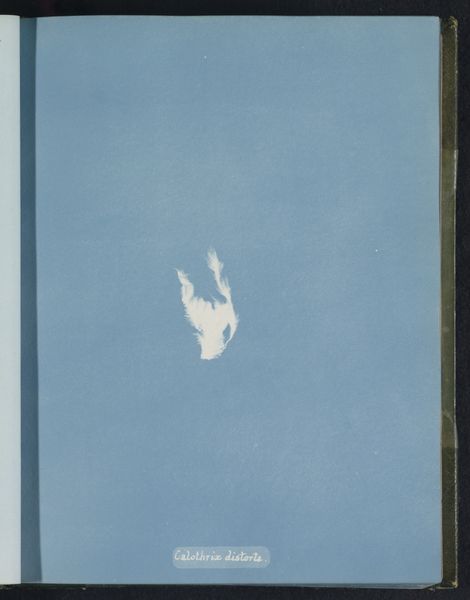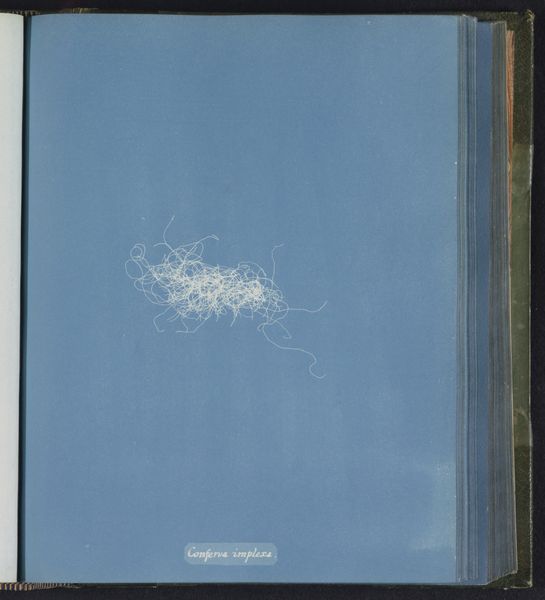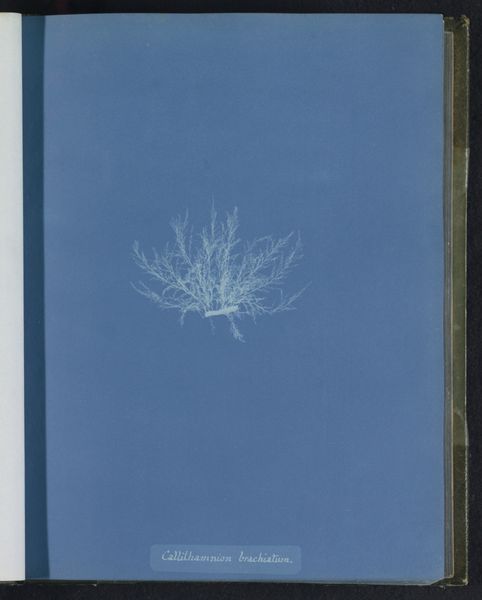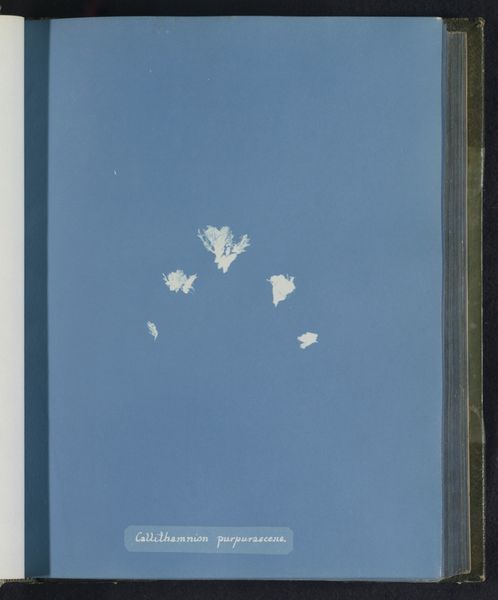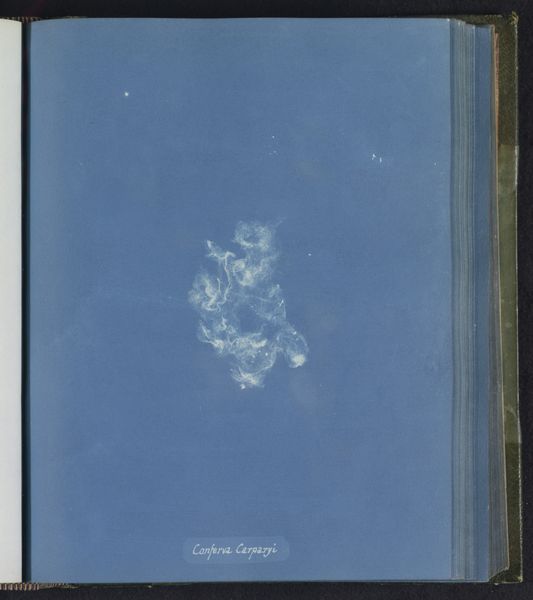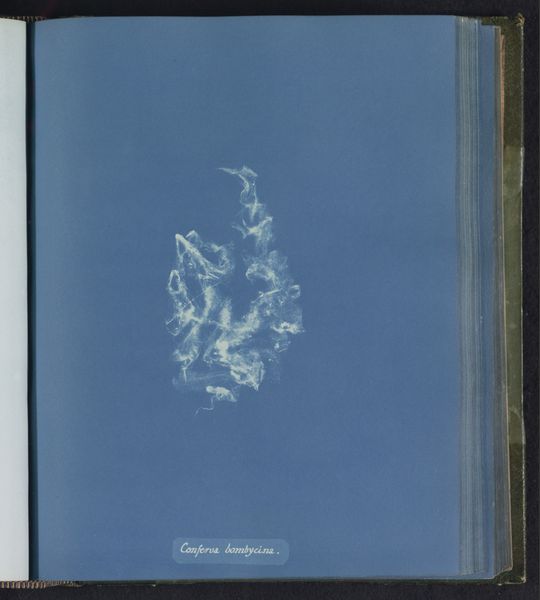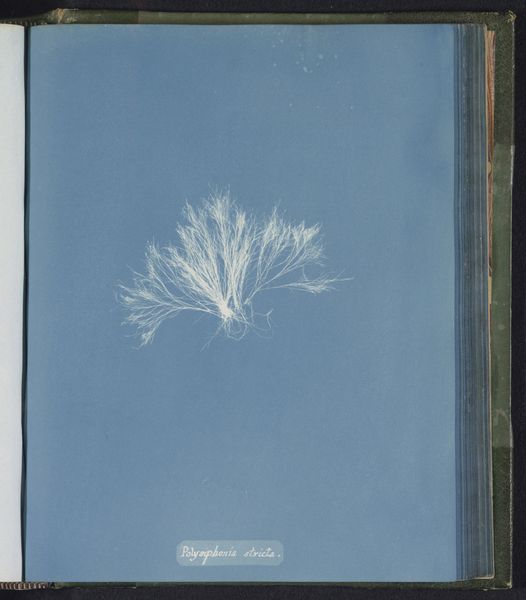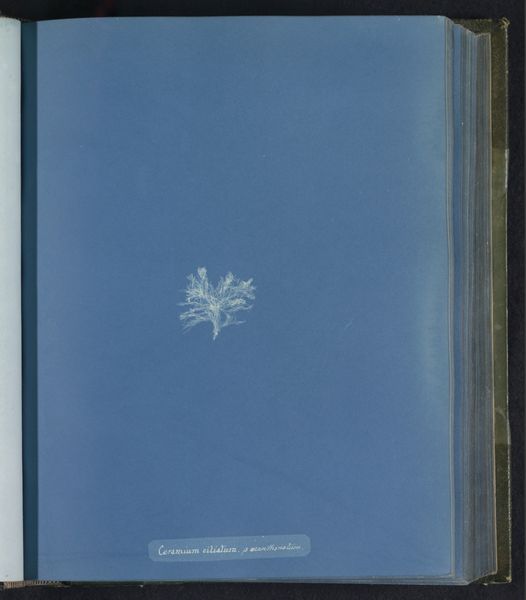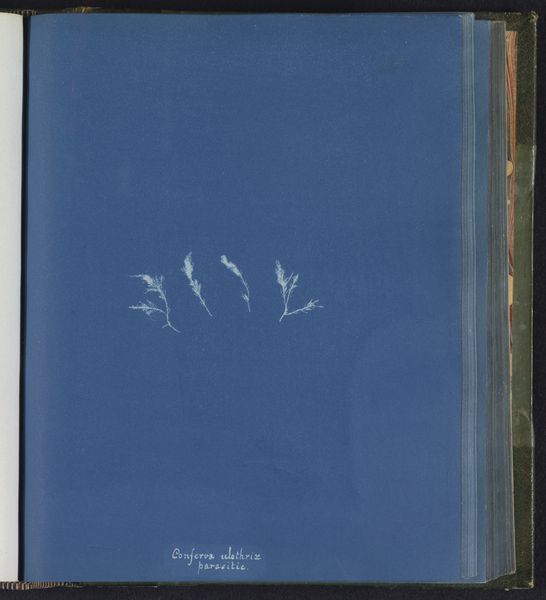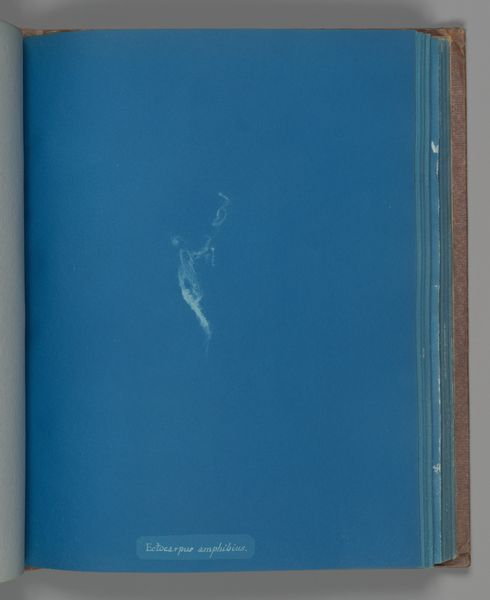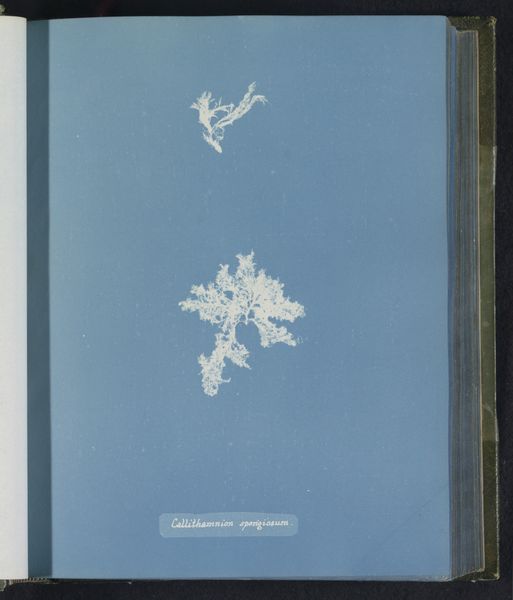
print, cyanotype, photography
# print
#
cyanotype
#
photography
#
coloured pencil
Dimensions: height 250 mm, width 200 mm
Copyright: Rijks Museum: Open Domain
Curator: Looking at this serene, almost ethereal print, we have Anna Atkins' "Callithamnion floccosum," created sometime between 1843 and 1853. It’s a cyanotype, a very early form of photography, and quite beautiful. Editor: My initial impression is one of delicacy. Those pale, feathery shapes against the deep blue evoke a sense of underwater tranquility, like jellyfish drifting in the deep ocean. The contrast creates an impactful dreamlike impression. Curator: Indeed. Atkins, a botanist herself, used this process to create detailed records of plant life. This print comes from her series "British Algae: Cyanotype Impressions", arguably the first book of photographs ever published. Imagine the revolutionary implications of such documentation at that time. Editor: It’s incredible to think of this as a scientific record. But I’m also struck by the symbolic weight of the algae itself. In many cultures, seaweed represents resilience, adaptation, and the mysteries of the deep. And it speaks volumes about woman's relationship with science during that historical moment. Curator: Absolutely. And don't forget the cultural implications. The use of cyanotype by a woman scientist speaks to the slow rise of women in what was, at the time, considered to be a man's world. In Britain's Victorian era of industry, Atkins pioneered access to arts and science by virtue of technological means. Editor: You’re right. I can also see her cyanotypes, aside from accurate rendering, serving a metaphor for growth, interconnection, and unseen depths. She allows viewers to find connections, almost forcing connections, through form, which transcend simple data taking. Curator: It is interesting to reflect that the aesthetic quality comes not from brushstrokes, but a meticulous scientific process, yet the result resonates deeply within art history. Editor: For me, viewing her image, it prompts contemplation about humanity's insatiable curiosity about the natural world and our enduring quest to capture it with every tool at hand. Curator: Thank you. That gives a very new light to Atkins' scientific photography, wouldn't you agree? Editor: It does indeed. These cyanotypes remind me to find magic in unexpected places.
Comments
No comments
Be the first to comment and join the conversation on the ultimate creative platform.
